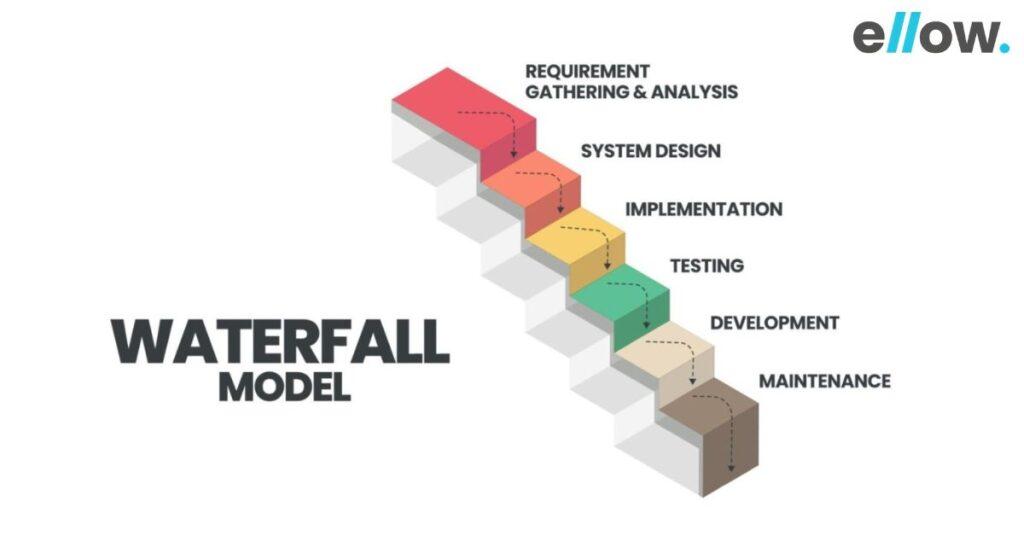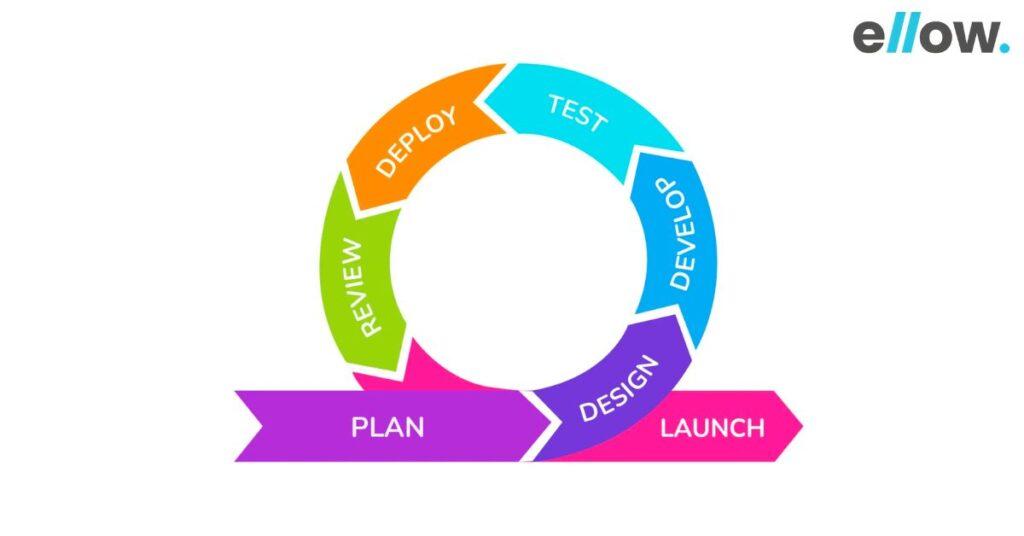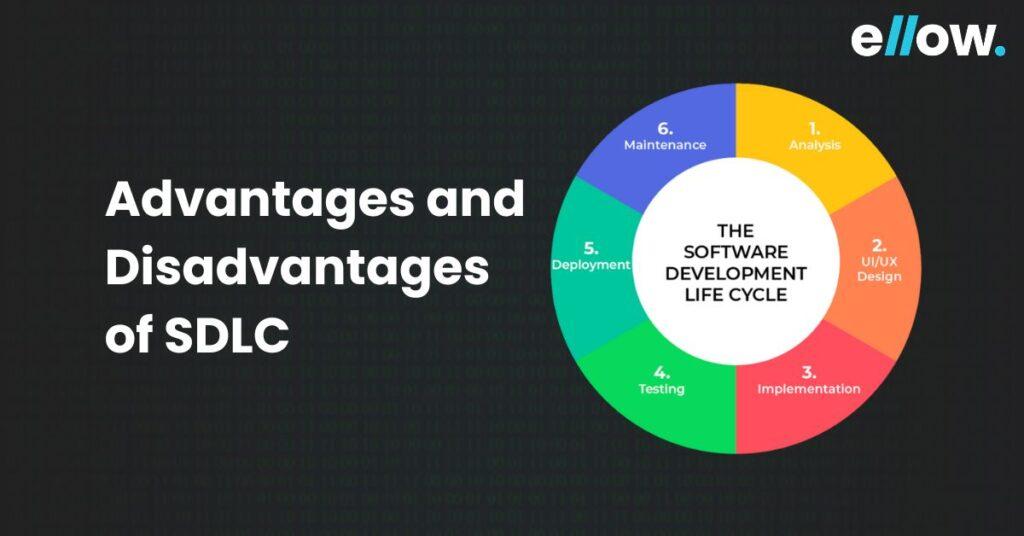In the dynamic world of software development, a structured approach is crucial for delivering high-quality software efficiently. The Software Development Life Cycle (SDLC) stands as a fundamental methodology guiding developers through the intricate process of software creation.
By breaking down the development process into distinct phases—planning, analysis, design, implementation, testing, and maintenance—SDLC offers a comprehensive framework for project management and execution.
This article explores the multifaceted nature of the SDLC, delving into its numerous advantages and potential drawbacks. Whether you are a seasoned developer or a business leader looking to understand the best practices in software development, this discussion will provide valuable insights into how SDLC can shape your projects.
We will also examine various SDLC models, including Waterfall, Agile, V-Shaped, Iterative, and Spiral methodologies, and offer practical tips for enhancing the efficiency and quality of your SDLC process.
- What is the Software Development Life Cycle?
- Stages of SDLC
- Advantages Of SDLC
- Disadvantages Of SDLC
- Software Development Life Cycle Models
- Waterfall Methodology
- AGILE methodology
- V-Shaped methodology
- Iterative methodology
- Spiral methodology
- Improving Efficiency And Quality In Your SDLC Process
- Conclusion
- Recommended Reads:
- FAQs
What is the Software Development Life Cycle?
Software Development Life Cycle (SDLC) refers to a methodology with clearly defined processes that define the step-by-step process of software development. It helps developers and organizations through various distinct phases, such as planning, analysis, design, implementation, testing, and maintenance.
SDLC is the backbone of efficient software development. This article delves into the complexities of the software development life cycle, looking into the advantages and disadvantages of SDLC.
SDLC encapsulates the sequential steps that give software solutions, to achieve the twin goals of effectiveness and high-quality output promptly.
Stages of SDLC
- Planning:
In the planning stage, developers and stakeholders come together to define the project’s scope, objectives, timelines, and resources. It is like creating a roadmap for the entire software development journey.
- Analysis:
Once the plan is set, the analysis stage starts. This is the stage where developers look deep into the requirements of the software.
- Design:
With a clear understanding of the requirements, the design stage is like sketching the blueprint of a building. Developers create a detailed plan for the software architecture, including how different components will interact.
- Implementation (Coding):
This stage involves writing code, integrating different modules, and ensuring that the software behaves as intended.
- Testing:
In the testing stage, developers rigorously evaluate the software to identify and fix bugs or issues. Testing ensures the software functions correctly and meets user expectations.
- Deployment (and Maintenance):
Once the software passes testing, it is ready for deployment. The software is released to users, and developers monitor its performance. Additionally, any issues that arise after deployment are addressed through ongoing maintenance. This phase ensures that the software remains effective and adapts to changes in technology or user needs.
Check this video out: SDLC Life Cycle for Beginners | Software Development Life Cycle with Real life example
Advantages Of SDLC
- Structured Approach: SDLC offers a structured approach to software development, efficient planning, and organization of tasks for developers. This structured methodology not only minimizes errors but also enhances productivity, ensuring the timely delivery of high-quality software.
- Risk Management: A great aspect of SDLC is its ability to identify and effectively manage risks inherent in the software development process. By pinpointing potential risks early on, developers can proactively address and mitigate them, ultimately diminishing the overall risk associated with software development.
- Consistency: SDLC establishes a foundation for consistency in software development through a standardized framework and methodology. This consistency is instrumental in elevating the quality of the software, guaranteeing that the final product aligns seamlessly with client expectations.
- Collaboration: SDLC fosters a collaborative environment among team members by providing a common application framework and language for communication. This collaborative synergy not only enhances the overall quality of the software but also ensures that the end product precisely fulfills the client’s requirements.
- Cost-Effective: SDLC proves to be a cost-effective approach by identifying potential issues early in the development process through the use of prototyping tools like Figma and others. Early issue detection allows developers to take proactive measures, significantly reducing overall development costs. This cost-effective attribute positions SDLC as a strategic choice in the realm of software development.
Disadvantages Of SDLC
- Time-Consuming: One major disadvantage is the time it takes to navigate through SDLC, particularly when dealing with intricate development processes. This time investment can lead to frustrating delays in software delivery, impacting both developers and clients alike.
- Rigid framework: SDLC exhibits a degree of rigidity, particularly when confronted with shifting project requirements mid-development. This lack of adaptability can yield a final product that falls short of meeting the client’s changing needs.
- High Upfront Cost: Embarking on an SDLC journey demands a substantial upfront investment in terms of time, finances, and resources. This upfront cost can pose a considerable hurdle for smaller businesses or startups that may lack the necessary resources to commit to the demands of SDLC.
- Overemphasis on Process: A potential pitfall of SDLC is its tendency to place excessive emphasis on the development process itself, potentially overshadowing the end product. This overemphasis may inadvertently stifle innovation and creativity, resulting in a final product that lacks the spark of originality and ingenuity.
Software Development Life Cycle Models

Waterfall Methodology

The Waterfall Model, introduced as the pioneer among process models, follows a linear-sequential life cycle approach. Its simplicity lies in the fact that each phase must be completed before the subsequent one begins, ensuring a non-overlapping progression in the development process. This model often termed a Software Development Life Cycle (SDLC) approach, portrays the software development process with a clear, step-by-step flow.
This model is typically employed in projects with well-defined requirements and a stable scope. It is best suited for situations where the project’s objectives are clear from the outset and unlikely to undergo significant changes throughout the development process.
Advantages of the Waterfall Model:
- Departmentalization and Managerial Control: One of its strengths is the facilitation of departmentalization, allowing for efficient managerial control.
- Simplicity: The model is notably simple and easily comprehensible, making it user-friendly for development teams.
- Manageability: Due to its rigid structure, each phase has distinct deliverables and a systematic review process, contributing to ease of management.
- Sequential Processing: Phases are executed and concluded one at a time, promoting a systematic and organized workflow.
- Suitability for Well-Understood Requirements: It is particularly effective for smaller projects with well-understood requirements, ensuring a streamlined development process.
- Establishment of Timelines: A predefined schedule with deadlines for each development stage allows for a structured progression, resembling a car moving through a car wash, potentially leading to on-time delivery.
Disadvantages of the Waterfall Model:
- Irreversible: The strict waterfall model does not allow for revisiting completed stages. Once a stage is finished, rectifying any identified problems becomes impractical.
- Uncertainty at Project Initiation: It is challenging to explicitly define all requirements at the project’s outset, introducing uncertainties in the initial stages.
- Managing Expectations: Clients must exhibit patience since they can only witness the working model during the deployment stage. Identifying and addressing problems at a later stage is often too late due to the model’s inflexibility.
- Complex Project Implementation Difficulty: Implementing the waterfall model in complex projects poses challenges due to the model’s linear nature.
- Late Testing Challenges: The testing phase occurring late in the process makes it difficult to identify problems that may have originated in the earlier stages, presenting a significant challenge in ensuring a robust final product.
AGILE methodology

AGILE is a development approach that emphasizes continuous iteration of development and testing throughout the software development lifecycle. Unlike the Waterfall model, both development and testing activities occur simultaneously.
The Agile model is particularly effective in dynamic and fast-paced projects where requirements are subject to change. It excels in software development scenarios that prioritize iterative progress, collaboration, and adaptability, making it well-suited for projects with evolving or unclear requirements.
Advantages of Agile Software Development Methodology:
- Manage Change More Effectively:
By creating smaller iterations, teams can focus on delivering value without requiring all requirements upfront. At the end of each iteration, the team reviews the backlog, re-prioritizing and investing time in the next sprint.
- Improved Customer Engagement:
Agile mandates significant client involvement in the development process. Clients prioritize features for the next sprint and review work products during sessions, reducing confusion between client expectations and developer deliverables.
- Increased Productivity:
Agile optimizes resource utilization, enabling quick starts and sustained productivity. Work is divided into iterations with clear milestones and deadlines, keeping developers focused on progress.
- Visibility:
Agile provides visibility into the product’s entire lifecycle. Stakeholders watch the application evolve, offering feedback throughout the development process.
- Agree on Clear Definitions:
In Agile, teams can define clear criteria for what constitutes a ‘ready’ state and the completion of a task, providing transparency and alignment on project progress. Clear definitions enhance developer accountability, fostering consensus on project goals.
Disadvantages of Agile Software Development Methodology:
- Difficulty in Assessing Effort:
For large software deliverables, assessing effort at the project’s outset can be challenging in Agile.
- Lack of Emphasis on Designing and Documentation:
Agile may neglect necessary designing and documentation, impacting overall project understanding.
- Potential for Project Derailment:
If the customer representative lacks clarity on the outcome, Agile projects may easily deviate from the intended path.
4. Reliance on Experienced Developers:
Agile’s decision-making requirements in the development process may restrict its suitability to seasoned programmers, potentially sidelining less experienced team members unless paired with seasoned counterparts.”
V-Shaped methodology

V-Shaped methodology, also known as the Verification and Validation model, is a software development lifecycle approach executed in a sequential manner resembling a V-shape. In this model, each stage of development is directly linked to a corresponding testing phase, ensuring a methodical and systematic approach.
This model is predominantly employed in projects with well-defined and stable requirements, where a sequential and systematic approach is essential. It is particularly effective in industries such as aerospace and defense, where rigorous testing and documentation are critical throughout the development lifecycle.
Advantages of V-shaped methodology:
- Simplicity and Ease of Use: One of the notable strengths of the V-Model lies in its simplicity and user-friendliness. The sequential structure facilitates straightforward navigation through the development and testing phases.
- Early Planning and Test Design: Testing activities, including planning and test design, are initiated well before the coding phase. This proactive approach results in significant time savings, increasing the likelihood of project success compared to traditional waterfall models.
- Proactive Defect Tracking: The V-Model promotes early detection of defects through rigorous testing at each stage. This proactive defect tracking ensures that issues are identified and addressed in the early phases, reducing the likelihood of more significant problems later in the development process.
- Prevention of Downward Defect Flow: The model prevents the downward flow of defects by addressing issues at the stage where they originate. This helps in maintaining the integrity and quality of the software throughout the development lifecycle.
- Suitability for Small Projects: V-shaped methodology is well-suited for small projects with easily understandable requirements. Its structured and sequential nature ensures efficient progress in such scenarios.
Disadvantages of V-Model:
- Rigidity and Limited Flexibility: The V-Model is criticized for its rigid and inflexible structure. Once a phase is completed, it’s challenging to accommodate changes, making it less adaptable to evolving project requirements.
- Absence of Early Prototypes: Since software development occurs during the implementation phase, the V-Model lacks the production of early prototypes. This absence may hinder stakeholder visibility and input during the initial stages.
- Documentation Overhead with Changes: Any modifications during the development process require updates not only to the software but also to all testing documents and Software Requirement Specification (SRS) documents. This can result in increased documentation overhead and potential inconsistencies.
Iterative methodology
Iterative development is a methodology that involves breaking down the software development process into smaller, manageable chunks. It operates through repeated cycles of designing, developing, and testing feature code until a fully functional software application is ready for deployment.
Iterative methodologies find significant application in projects where requirements evolve or are not fully understood at the outset. This approach is particularly effective in software development, product prototyping, and scenarios where continuous refinement is essential for optimal outcomes.

Advantages of the Iterative Model:
- Generates working software quickly and early during the software life cycle: By focusing on smaller iterations, the development team can produce tangible results faster, providing a preview of the software’s functionality early in the process.
- More flexible and less costly to change scope and requirements: The iterative approach allows for adjustments to be made throughout the development process, making it easier and less expensive to accommodate changes in project scope or requirements.
- Easier to test and debug during a smaller iteration: With each iteration, testing, and debugging become more manageable since they are applied to a smaller set of features. This contributes to a more efficient and effective debugging process.
- Easier to manage risk because risky pieces are identified and handled during its iteration: Identifying and addressing potential issues in smaller, iterative phases allows for better risk management. This approach helps in mitigating risks before they escalate into larger problems.
- Each iteration is an easily managed milestone: Breaking the development process into iterations provides clear and manageable milestones, making it easier for the team to track progress and manage deadlines effectively.
Disadvantages of the Iterative Model:
- Each phase of an iteration is rigid and does not overlap with others: One drawback is that the phases within each iteration are sequential and may not overlap. This can lead to a more structured but less flexible development process.
- Problems may arise about system architecture because not all requirements are gathered upfront for the entire software life cycle: Since not all requirements are gathered at the beginning of the development cycle, there is a risk of encountering architectural challenges as the project progresses, potentially leading to unforeseen complications.
Spiral methodology

The Spiral model, a hybrid approach blending iterative development with the structured elements of the waterfall model, prioritizes risk analysis throughout the software development lifecycle. This model allows for incremental product releases or refinements in each iteration around the spiral, combining flexibility with control.
This model has a risk-driven approach and finds utility in complex and high-risk projects, particularly those where frequent changes are expected. It is well-suited for software development endeavors that demand continuous refinement and risk assessment throughout the project lifecycle.
Advantages of the Spiral Model:
- Flexibility for Additional Functionality: One notable advantage is the flexibility it offers for incorporating additional functionality or making changes at later stages of development. This adaptability caters to evolving project requirements.
- Facilitates Cost Estimation: Cost estimation becomes more manageable due to the prototype building occurring in small, incremental fragments. This allows for a more accurate assessment of project costs as it progresses.
- Effective Risk Management: The continuous and repeated development cycles inherent in the spiral model contribute to effective risk management. It enables early identification and mitigation of potential issues, reducing the likelihood of major setbacks later in the process.
- Systematic and Rapid Development: Development occurs rapidly, and features are added systematically. This structured approach ensures a steady pace of progress, making the development process more efficient.
- Opportunity for Customer Feedback: The model inherently accommodates customer feedback, fostering a collaborative and adaptive development environment. This continuous feedback loop helps align the product with customer expectations.
Disadvantages of the Spiral Model:
- Risk of Schedule and Budget Overruns: Despite its risk management focus, there is a risk of not meeting the predetermined schedule or budget. Unforeseen challenges may arise, impacting project timelines and financial constraints.
- Suitability for Large Projects Only: The model is most effective for large-scale projects. Its demands for risk assessment expertise and strict adherence to the spiral model protocol may be excessive for smaller projects, potentially leading to unnecessary complexities.
- Strict Protocol Requirements: The smooth operation of the spiral model requires strict adherence to its protocol. Deviations from the established process could compromise the effectiveness of risk management and overall project success.
- Increased Documentation: The model involves multiple intermediate phases, leading to a higher documentation burden. This increased documentation effort can be resource-intensive and may not be suitable for projects with a preference for streamlined processes.
- Not Advisable for Smaller Projects: While the spiral model offers advantages, its complexity and resource requirements make it less advisable for smaller projects. The associated costs and documentation efforts may outweigh the benefits in such cases.
Improving Efficiency And Quality In Your SDLC Process
To improve efficiency and elevate the quality of your SDLC process, consider these practical strategies.
- Define the Project Scope Clearly:
Begin by gaining a comprehensive understanding of the project’s scope and objectives. This foundational step sets the tone for the entire development process.
- Craft a Detailed Project Plan:
Develop a thorough project plan and schedule, encompassing all essential tasks and allocating resources effectively. A well-structured plan is instrumental in maintaining order and meeting deadlines.
- Engage Stakeholders Actively:
Involve all stakeholders in the planning phase. Their input is invaluable, ensuring not only their buy-in but also cultivating a supportive environment for the entire development journey.
- Establish Transparent Communication Channels:
Foster clear communication channels and protocols to keep all team members in the loop. Open and effective communication is key to preventing misunderstandings and ensuring everyone is on the same page.
- Embrace an Iterative Development Approach:
Adopt an iterative development approach that allows for continuous feedback and improvement. This flexibility enhances adaptability to changing requirements and promotes a more responsive development process.
- Integrate Testing Throughout :
Ensure that testing and quality assurance are seamlessly integrated into every stage of the SDLC. This proactive approach identifies and rectifies issues early in the process, minimizing the likelihood of defects in the final product.
- Leverage Automated Tools:
Streamline repetitive tasks and enhance efficiency by incorporating automated tools. These tools expedite the development process and contribute to the final output’s precision and reliability.
- Document Processes and Decisions:
Documenting all processes and decisions is essential for knowledge retention and transfer. This practice ensures that insights and lessons learned are preserved for future reference, preventing the loss of institutional knowledge.
- Conduct Regular Reviews and Retrospectives:
Schedule regular reviews and retrospectives to identify areas for improvement. This continuous feedback loop allows for the ongoing refinement of processes, fostering a culture of continuous improvement within the development team.
- Promote Collaboration and Continuous Learning:
Emphasize collaboration, teamwork, and a commitment to continuous learning throughout the SDLC process. A collaborative environment fosters creativity and innovation, while a culture of continuous learning keeps the team abreast of evolving industry best practices.
Conclusion
The Software Development Life Cycle (SDLC) emerges as a versatile and impactful tool in software development. Like any methodology, it has its advantages and disadvantages, but its potency in steering businesses through the intricacies of software development cannot be understated.
By looking at the advantages and disadvantages of SDLC, organizations can make well-informed choices for their unique development requirements.
Recommended Reads:
DevOps and Agile: How They Interrelate?
Software Development Outsourcing Challenges and how to solve them
FAQs
What are the primary advantages of using SDLC in software development?
SDLC provides a structured approach, ensuring systematic planning, execution, and monitoring throughout the software development process. This leads to increased efficiency, reduced errors, and better overall project management.
Are there any potential drawbacks to implementing SDLC in software development projects?
Yes, one drawback is the potential for increased time and cost due to the thorough planning and documentation involved. Additionally, changes to requirements during development can be challenging to accommodate.
How does SDLC contribute to the overall quality of software products?
SDLC emphasizes rigorous testing and validation at various stages, ensuring that defects are identified and rectified early in the development process. This results in higher quality and reliability of the final software product.
Can businesses customize the SDLC process to suit their specific needs and project requirements?
Absolutely. SDLC is a flexible framework, allowing businesses to tailor its phases and activities based on the nature and scope of their software development projects. This adaptability enhances its applicability across diverse industries.
Is SDLC suitable for all types of software development projects, regardless of size or complexity?
SDLC is scalable and can be applied to projects of varying sizes and complexities. However, its comprehensive nature may be more beneficial for larger and more complex projects, where careful planning and structure are critical for success.









